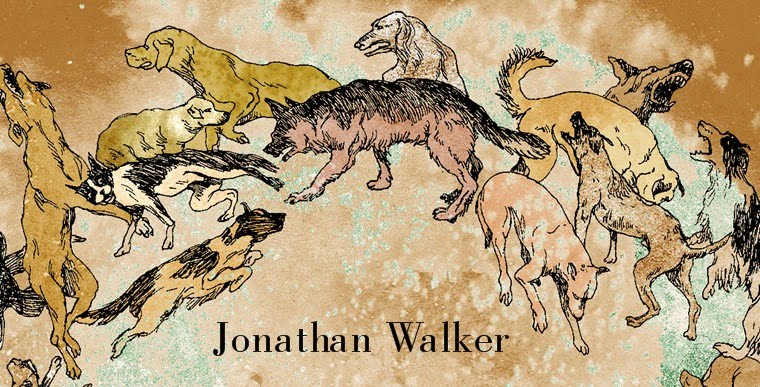The clip above includes (from about 00:45) the final sequence in Andrei Rublev by Andrei Tarkovsky, a (very) unorthodox biographical film about a fifteenth-century monk and icon painter in Russia. The action of the film directly dramatises selected scenes from Rublev's life in black-and-white, but after the action concludes, we enter this colour sequence, which consists of a series of slow tracking shots (interspersed with equally slow zooms and / or push-ins) over the painted surface of Rublev's surviving icons. This method of animating static paintings has become a cliche in TV documentaries about art, and Tarkovsky's production notes from 1962 indicate that it was already established as a convention even then.
In our film there will not be a single shot of Rublev painting his icons. He will simply live, and he won't even be present on-screen in all episodes. And the last part of the film (in colour) will be solely devoted to Rublev's icons. We will show them in detail (as in a popular scientific film). The on-screen demonstration of the icon will be accompanied by the same musical theme which sounded in the episode of Rublev's life corresponding to the time during which the icon was conceived [quotation taken from Robert Bird, Andrei Rublev, p. 37].
In the colour sequence, the music fills the entire soundtrack and thereby assumes an importance that recalls the ending of Robert Bresson's A Man Escaped: i.e. it seems to signal transcedence even as it literally emphasises immanence and materiality (the surface of the painting).
Robert Bird describes the significance of the colour coda to Andrei Rublev in the following terms (p. 10):
[It] consummates the halting narrative, retrospectively revealing its underlying logic and transforming its deep textures into glorious surfaces. However, the icon display also suspends the complex weave of dialogue, music and ambient sound in a pious supplication. In effect, it dissolves the film's heavy temporality in its eternal patterns, as if Tarkovsky was ceding authorship to St Andrei Rublev. Several of Tarkovsky's subsequent films end in a similar confusion of temporal and spatial planes, a feature which irks some viewers as an 'easy transcendence' of the characters' otherwise torturous progression across the dolorous earth. However, by extending his searching gaze into the transcendent plane, Tarkovsky is also raising the stakes of his aesthetic gamble. Instead of the certainty of faith, he contemplates the possibility that there can be no true ending, possibly no true story at all, under the weight of time [Bird, Andrei Rublev, p. 10].
I first saw Andrei Rublev in about 1991. Its coda had a transfixing effect on me, and I have spent the twenty years since trying to re-enact this effect in one way or another. One of the immediate, enabling ideas it seemed to suggest was that the dialectic of realism vs. abstraction was a question solely of the scale of observation: that is, any image becomes abstract if you zoom in close enough; and any apparently flat surface is revealed to be sculpted if you blow it up large enough. I have therefore engaged in numerous attempts to photograph the surface of historical paintings in microscopic detail. Below are two attempts at this: close-ups of the surface of paintings from the Fitzwilliam Museum in Cambridge, which are part of icon-like renditions of gold fabrics, in which imprinted abstract patterns achieve their effect by textural means.
In Five Wounds, Dan and I do something similar by isolating a fragment of Tintoretto's Paradise, and then translating it into a collage of abstract shapes of different colours, which are juxtaposed as if in an insane painting-by-numbers exercise. This exercise combines the literal and abstract within the same scale of representation: i.e. by means of a mosaic effect, it combines the perspective of the 'establishing shot', which shows the whole painting, with the isolation of particular details or fragments that characterises the close-up.
In the endpapers of the first edition of Five Wounds, this manipulated visual citation from Tintoretto was rendered even more abstract by being presented as a blown-up fragment of a fragment, thus:
Many icons are literally mosaics of course, and Tarkovsky compared the unusual structure of Andrei Rublev to that of a mosaic:
You can stick your nose into some fragment, beat it with your fist, and scream: 'Why is it black here? It shouldn't be black here! I don't like to look at black!' But you have to look at a mosaic from afar and on the whole, and if you change one colour the whole thing falls apart [quoted in Bird, Andrei Rublev, p. 38].
The mosaic is an ancient pictorial technique, but the ending of Andrei Rublev is - despite its eschewal of dramatisation and mise-en-scene - intrinsically cinematic, or rather, photographic, because slow-motion and the close-up are both quintessentially photographic effects, which initiated a new way of looking at the world by giving us access to what Walter Benjamin called the optical unconscious. Photography also revolutionised the way we think about paintings, not only by making it easy to reproduce them, but also by making it easy to isolate details from them (and even, via X-rays, to analyse their constituent elements).





No comments:
Post a Comment